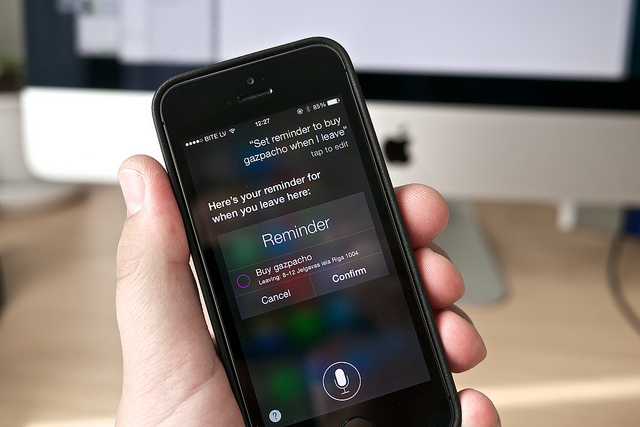Technology has become one of the most sought after learning tools by modern students, especially mobile devices. With mobile’s ability to offer quick resources, mobile learning (mLearning) has become an educational trend that has grown and transcended into many forms. Surprisingly, an increase in the number of students using smartphones has been seen over the years, particularly in mature student’s education or college level.

Seventy seven percent of adults aged 18-29 are smartphone owners in the United States, and there’s no signs of this slowing down. When Gaming Realms introduced mobile-optimized gaming on Spin Genie, they saw 66% of their users begin to use the website on their phones rather than on their computers, proving that phones are now becoming the gadget of choice for many. This is the same, not just for recreation, but for learning as well, with many students now opting to use apps instead of calculators and dictionaries.
Although many believe that the educational assistance of mobile devices come from learning apps, smartphones themselves can be reliable learning tools for students who want to enhance their vocabulary and language. How? Here are a few ways in which your smartphone can be a reliable learning tool to help expand your vocabulary and learn a new language faster.
Built-in translator
You may not like all of the pre-built features on your new smartphone, but it might just help you, like when you have to translate a word or phrase in real-time. Be thankful that smartphones come with built-in translator app from their operating system. Noticeably available on all Android-based handsets, the multi-lingual Google Translate application is highly helpful not only to travelers visiting a foreign land, but also to those who want to expand their vocabulary. Back in 2012, Google made a huge update to their translation app by allowing it to translate printed text. The handset’s camera will have to focus on a particular text, take a photo of it, and the app will translate it for you. It can either be a Hindi text traffic sign that you couldn’t figure out or an English phrase you want to translate to your first language – you name it; the app can do it for you. Just take note that you will need your device to be connected to a Wi-Fi or data connection all the time.
Text-to-speech
Smartphones today are now smarter than ever with its ability to respond to your request via speech command. Apart from taking your orders, it can also read any messages on your screen in various languages, helping you in learning new words, phrases, or even sentences effectively, wherever you go. Android handsets come with a speech feature that can read text messages on the screen for you. There is the Android Lollipop’s advance Text-to-Speech function which comes with different languages: English, Spanish, French, Italian and many more. And, iPhones also come with the same feature through Siri reading your emails and text messages, and Cortana on Windows Phone that can read anything on your handset’s screen.
Learn more through split-screen
At one point during your journey of learning a new language, you will have to multi-task. This may mean that you will have to juggle watching videos, viewing images, and reading books while jotting down notes. Luckily smartphones allow you to do all of those tasks on a single device. With the help of a split-screen or multiple view feature, your smartphone will allow you to multitask in real-time. Be it, watching a language tutorial online or reading an eBook on the side, you can still take down notes all at the same time on a single screen. The split-screen function on mobile devices first arrived in 2012 with the release of the Note 2, and these features are still apparent on the latest smartphone like the Galaxy S6. As business professionals depend on these devices more and more, mobile manufacturers are now working on adding more PC features to these portable technologies.

Other tips that can really help
If you want to further enhance your vocabulary in another language, then these following tips can be very helpful in your journey. With the help of your smartphone, here are some activities you can do to learn a new language faster on your own:
- Watch various foreign language videos
You may not realize, but visual content makes learning faster for learners of all ages. By watching foreign language flicks, trailers, and shows, you are able to acquire more words and phrases easily as well as adopt proper pronunciation and enunciation. The FluentU provides language students with an access to a myriad of foreign language videos from trailers, news, inspiring talks and more with options for translation and subtitles. Learners are also able to learn in-context definition of each word. According to one user, “it makes it (FluentU) much more interesting.” - Read eBooks and online newspapers
Apart from videos, digital text content are also a good source of information to learn a new language. Electronic books (eBooks), online newspapers, and digital magazines will be your starting point. Read plenty of foreign digital articles and translate them using your smartphone to enhance your foreign vocabulary. Often, some write-ups might even use local slangs and idioms that may render a different definition on the translator app, so we recommend jotting it down for further review later on.| - Listen to music
Are you more of an audible learner? Consider listening to more foreign music to acquire the language faster. Download foreign songs, list down its lyrics, and review what it meant later on. Some apps may require you to be online, but we suggest sticking to those applications with offline listening to ensure you are more productive wherever you go. - Language swap
No one knows more words, phrases, and sentences than the natural speakers. So, why not speak to more local speakers? In some part of the world, there will be someone out there who wants to learn your mother tongue, and at some point, you are also interested to learn their own first language. If there is someone who is keen to learn your language and you want to learn theirs, then consider a practice called Language Swap. Collaborate with this person and swap as much knowledge by chatting or talking online. This process is a great way to effectively learn a foreign language faster.
Smartphones have become an indispensable learning tool for modern students, and we attest to it. Apart from the available apps that provide students shortcuts to the top learning materials online, the device itself comes with features and functions that can be helpful for a learner’s educational journey. How do you maximize your smartphone to learn a new language effectively? Know how you can further develop your vocabulary and language skills by subscribing on our blog page.
[su_spoiler title=”Images Credit” open=”yes”]Images:
[/su_spoiler]
Giancarlo Viterbo is a Filipino Technology Journalist, blogger and Editor of gadgetpilipinas.net, He is also a Geek, Dad and a Husband. He knows a lot about washing the dishes, doing some errands and following instructions from his boss on his day job. Follow him on twitter: @gianviterbo and @gadgetpilipinas.






